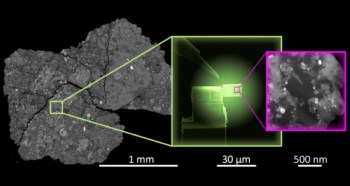
A new algorithm that compensates for deficiencies in X-ray lenses could make images from X-ray microscopes much sharper and higher in quality than ever before, say researchers at the University of Göttingen, Germany. Preliminary tests carried out at the German Electron Synchrotron (DESY) in Hamburg showed that the algorithm makes it possible to achieve sub-10-nm resolution and quantitative phase contrast even with highly imperfect optics.
Standard X-ray microscopes are non-destructive imaging tools capable of resolving details down to the 10 nm level at ultrafast speeds. There are three main techniques. The first is transmission X-ray microscopy (TXM), which was developed in the 1970s and which uses Fresnel zone plates (FZPs) as objective lenses to directly image and magnify the structure of a sample. The second is coherent diffractive imaging, which was developed to sidestep the problems associated with imperfect FZP lenses by replacing lens-based image formation with an iterative phase retrieval algorithm. The third technique, full-field X-ray microscopy, is based on inline holography and has both high resolution and an adjustable field of view, making it very good for imaging biological samples with weak contrast.
Combining three techniques
In the new work, researchers led by Jakob Soltau, Markus Osterhoff and Tim Salditt from Göttingen’s Institute for X-ray Physics showed that by combining aspects of all three techniques, it is possible to achieve much higher image quality and sharpness. To do this, they used a multilayer zone plate (MZP) as an objective lens to achieve high image resolution, coupled with a quantitative iterative phase retrieval scheme to reconstruct how X-rays transmit through the sample.
The MZP lens is made of finely structured layers a few atomic layers thick deposited from concentric rings on a nanowire. The researchers placed it at an adjustable distance between the sample being imaged and an X-ray camera in the extremely bright and focused X-ray beam at DESY. The signals that hit the camera provided information about the structure of the sample – even if it absorbed little or no X-ray radiation. “All that remained was to find a suitable algorithm to decode the information and reconstruct it into a sharp image,” Soltau and colleagues explain. “For this solution to work, it was crucial to precisely measure the lens itself, which was far from perfect, and to completely dispense with the assumption that it could be ideal.”

X-ray microscopy sharpens up
“It was only through the combination of lenses and numerical image reconstruction that we could achieve the high image quality,” Soltau continues. “To this end, we used the so-called MZP transfer function, which allows us to do away with perfectly aligned, aberration- and distortion-free optics, among other constraints.”
The researchers have dubbed their technique “reporter-based imaging” because, unlike conventional approaches that make use of an objective lens to acquire a sharper image of the sample, they use the MZP to “report” the light field behind the sample, rather than trying to obtain a sharp image in the plane of the detector.
Full details of the research are published in Physical Review Letters.



